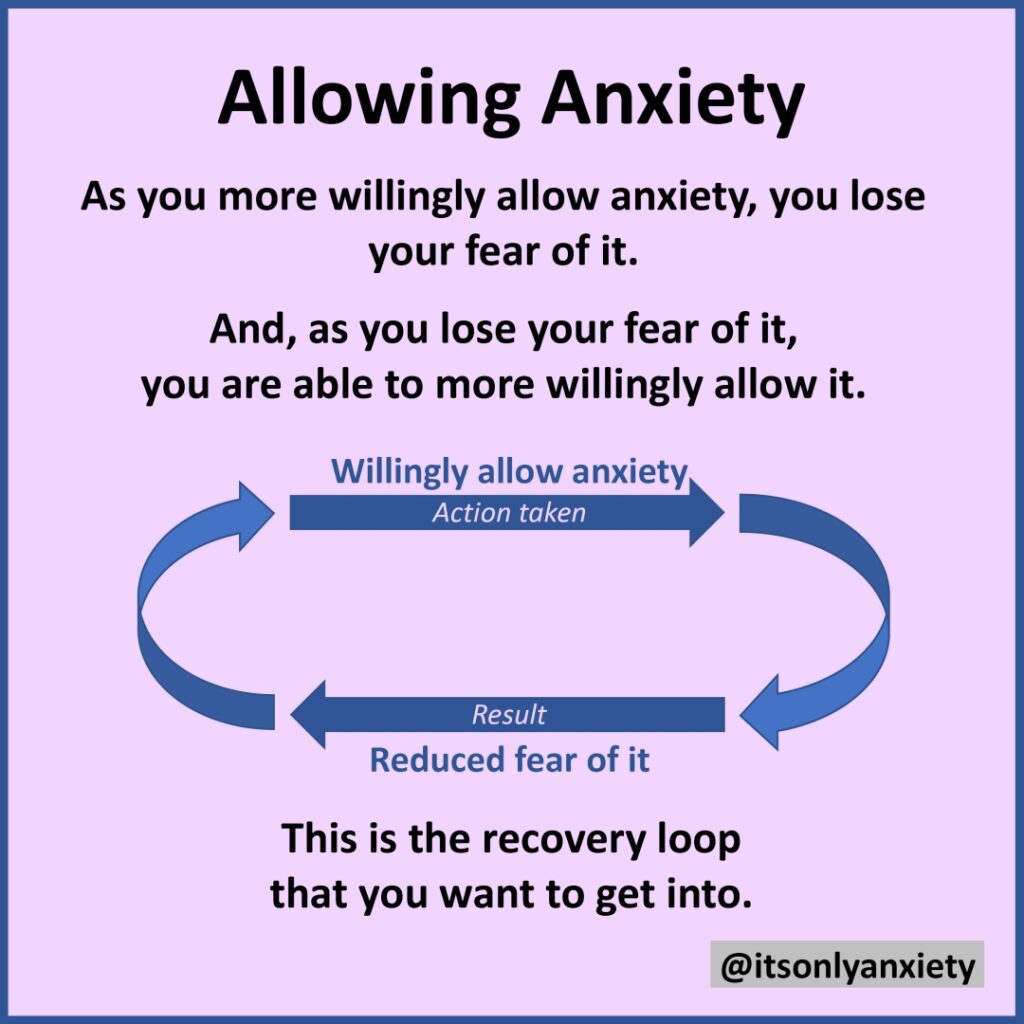This is where the “rubber meets the road”. Persistent practice is the only thing that will guarantee the journey to full and permanent recovery.
While it is important to understand anxiety to remove our bewilderment, and to understand the theory behind the Acceptance Method and how it works, the only thing that will move you from the anxiety state to recovery is PRACTICE.
Practice does not need to be perfect, just persistent over a long period of time. If you practice applying the Acceptance Method as best you can, and continue through the natural and inevitable ups and downs of the recovery journey, you WILL recover.
I had the honor of recovering alongside dozens of others with various types of anxiety, and have coached hundreds of others in the years since I recovered. I am convinced that everyone can recover, including you, no matter what type of anxiety you have, how long you have had it, or your particular struggles in life. If you can change your automatic response from one of fighting and avoiding to one of facing and accepting, you will recover.
Breaking the Cycle
The first problem we face when we start to practice (apply the Acceptance Method to our anxiety) is overwhelm and confusion. When we are hit by intense anxiety or panic we forget what to do. Any understanding we thought we had about the method flies right out of the window. We go instantly back to fighting and adding second fear. This leads to another “episode”, followed by renewed frustration, and despair that we will never be able to recover.
The second problem we have is that our way of reacting to anxiety is an ingrained habit. When the thoughts or symptoms strike, we instantly try to avoid, fight or suppress our anxiety and add second fear. We can be well down this road again before we even realize we are doing it.
To break this cycle, we must learn how to apply the Acceptance Method in the intense situations we will face. This means learning how to allow our anxiety, which is a healing cycle.

To stay on track, we need to know what is normal and expected, and be reassured that if we simply keep going we can recover. We need guidance at key times when we struggle, tips on how to overcome obstacles, and reassurance when we are suffering.
Setbacks
We will experience setbacks during our journey to recovery. These are periods where our suffering returns after a period of relative peace. We often feel like we have forgotten everything we learned and have slipped all the way back to the beginning. We haven’t, but it certainly feels that way.
Without clear guidance, setbacks can very easily derail our recovery and cause us to abandon the Acceptance Method. Setbacks are inevitable, and are actually when we learn the most. Practicing our way out of the setback teaches us a great deal. Eventually we come to understand that setbacks, like symptoms, in spite of their unpleasantness, are actually necessary for our recovery. They are our ticket out of the anxiety state!
Making Recovery Permanent
We can achieve relief from anxiety and regain our quality of life simply by learning how to face and accept our anxious thoughts and symptoms. However, if we don’t develop unshakable, invincible Voices of Truth & Acceptance we are at risk of a relapse.
Without this ingrained voice to ensure we respond the right way, when faced with a stressful or anxiety-provoking situation in our life, we may slip back into our old habit of fighting and adding second fear, and descend back into suffering. To our complete dismay we find ourselves firmly back in the anxiety state. We realize too late that our Voices of Truth & Acceptance had not been strong enough. We had recovered “fully” but not “permanently”, and we will have to go back to practicing the method, only this time paying attention to building the right inner voices.
This relapse into the anxiety state has happened to many sufferers who thought (hoped?) they had recovered. It is well worth taking a little extra time to recover the right way, making sure your Voices of Truth & Acceptance are built up sufficiently. My book explains in detail how this is done, including examples.
Building these voices is a key element of the Acceptance Method. There is great freedom in knowing that our recovery is permanent – that the anxiety state is a thing of the past, never to return. This is the place you want to get to.
The Need for Guidance
Despite the simplicity of the Acceptance Method, it is quite difficult to put it into practice consistently and over time. There are lots of bumps along the way that try to throw us off track. Yet we must practice for a while to make long-lasting changes to the way we respond to anxiety. Therefore we need to know how to ride throughout the twists and turns of the journey without losing the plot.
Furthermore, we may find it difficult to learn all the things we need to know by trial and error, and become discouraged. We need guidance from someone who has traveled the path before. With this in mind, I crafted my book in a logical way to guide you through the journey. It includes everything I believe is necessary to recover the right way.
I will also continue to develop and offer support for those recovering from anxiety using the Acceptance Method.
Email me if you are seeking support, or if you just want to ask me a few questions.